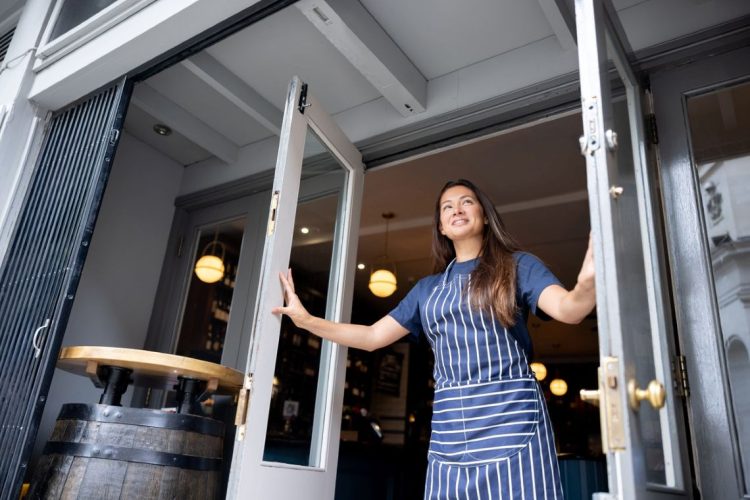The whole neighborhood watches in awe as a comically large pair of shiny, silver scissors slice through a ruby red ribbon, and a brand-new restaurant is officially in business. A once quiet area where the owner of the only diner for miles knows every customer’s order as “the usual,” will now undergo some major changes.
In a few short years, more restaurants, cafes, boutiques, bookstores, salons and more will likely begin to follow suit, and suddenly, the area will make its way into local lifestyle magazines next to buzzwords like “up-and-coming” and “hidden treasure.” Eventually, the smattering of houses across town that have sported “for sale” signs like year-round decorations will begin seeing bidding wars as people of all ages decide that “walkability,” or how close local amenities are by foot, is a top priority.
This scenario has become so common that real estate portal giants like Redfin created its Walk Score, a method used to measure the walkability of almost every neighborhood in the U.S. and Canada, by analyzing hundreds of walking routes to nearby amenities and awarding points based on distance and time.
In the 2023 Community & Transportation Preferences Survey, the National Association of Realtors® (NAR) found that 79% of respondents ranked walkability as “very” or “somewhat” important, with 90% of millennial and Gen Z buyers indicating that they’d pay more for a home in a walkable community. When asked how much they value different neighborhood virtues, respondents ranked walkability to restaurants and shops second on the list, only behind low crime rates.
While walkability became a huge point of focus during COVID specifically, the demand for easily walkable neighborhoods has only grown since then. “With COVID in our rearview mirror, this study shows that substantial demand for walkability persists for Americans of all ages,” says NAR.
Michael Wolf, a San Diego real estate agent and co-founder of The Wolf Real Estate Team, often highlights the rich and vibrant restaurant scene downtown to his clients during showings.
“I think that restaurants are a funnel for an area’s attention,” Wolf began. “If the restaurant is successful enough, it can actually have a dramatic effect on the surrounding neighborhood in terms of its viability and attractiveness and, in turn, its property values.”
While walkability may not directly determine desirability or home value, there’s definitely some overlap between highly walkable cities and property prices. Redfin noted that, in U.S. cities, homes within walking distance of urban amenities sell for an average of 23.5%, or $77,668, more than comparable properties that are car dependent.
“In real estate, there’s an old expression ‘location, location, location,’” said Redfin Chief Economist Daryl Fairweather. “That expression means that the value of a home isn’t just about the home itself, it’s about where the home is located and what’s located near the home. Buyers will pay a premium for homes that are located near restaurants, transit, parks, quality schools or other local amenities.”
Wolf continued, “In South Park, a neighborhood just outside of downtown San Diego, there’s a restaurant called Buona Forchetta. It opened around 12 years ago, and it really shaped the neighborhood. Flash forward, now they have like 13 or 14 restaurants throughout San Diego.
“But, it started in South Park, and since then, the entire area around Buona Forchetta has changed dramatically in terms of price and desirability. It used to be a renter community and now it’s an area that people would love to live in if they can afford it. It wasn’t always like that.”
Obviously, restaurants aren’t the only nearby convenience people look for when home searching, but the opening of a new restaurant can often be the first signal of an expanding or redeveloping area—something that agents can use for prospecting or providing guidance for buyers.
A good neighborhood needs what Wolf refers to as the “secret sauce,” the perfect mixture of amenities, and new restaurants typically come first.
“Retail is one thing, and it sells one item or service and appeals to a certain demographic. But the restaurant can bring in the community, it can serve everybody because everybody’s a potential customer,” Wolf said. “That’s where the community can get together to share stories, break bread, meet up for business or recreation.
“The restaurant, it’ll bring you in, it’s part of the fabric that makes the community and the area what it is in terms of its livelihood, its vibe and the feeling you get when you’re in it,” he adds.
Paul Zweben, an agent with Compass’s The Zweben Team and former NYC chef, proposes the idea that, when it comes to food, people want to be within walking distance. Grocery stores, restaurants, delis and cafes are non-negotiables for many when it comes to walkability, whereas more people might be willing to drive for other errands such as shopping for apparel or household supplies.
The trend isn’t limited to New York and California; in Denver, agents are seeing the same effects. “Restaurants create immediate engagement. Parks and retail bring long-term stability, while dining establishes a sense of culture and activity right away,” said Jason Dalbey, of Compass’s Denver Group Real Estate.
He also notes that the type of dining experience/restaurant is key to understanding the revitalization of a neighborhood.
“Independent, local restaurants bring authenticity and help create a sense of place,” Dalbey said. “National chains add convenience, but it’s the chef-driven, locally owned spots that give Denver neighborhoods their soul. Buyers often tell us they want to live ‘where the locals eat,’ and that’s something only independent restaurants can provide.”
But, as trendy restaurants breathe new life into a neighborhood, the area’s surge in popularity can often come at an expensive cost to existing residents. The new amenities that give the neighborhood its soul can also make it less accessible to the people who helped build it.
While restaurants can raise a neighborhood’s value, it’s also important to note that it can lead to, or rather signal, gentrification, which can displace many long-time residents and quickly alter the neighborhood’s character.
The ceremonious snipping of the ribbon might bring in a flood of young, eager homebuyers and new businessowners, but it can also drive out those who can no longer afford the expanding neighborhood and growing prices.
The effects of revitalization can be intense and complex, but understanding them as an agent or real estate professional is essential to helping existing homeowners and potential homebuyers navigate the changing neighborhood.
Long after the ribbon is cut, a restaurant continues to shape the neighborhood it’s in, and for agents that are paying attention, it can often be the first sign of where the market is headed.











